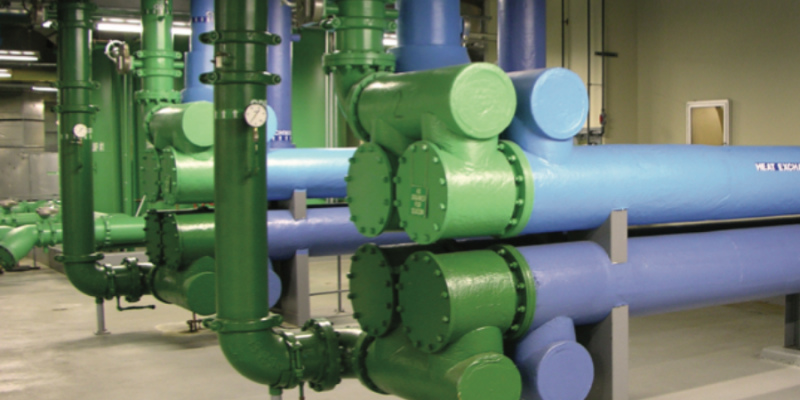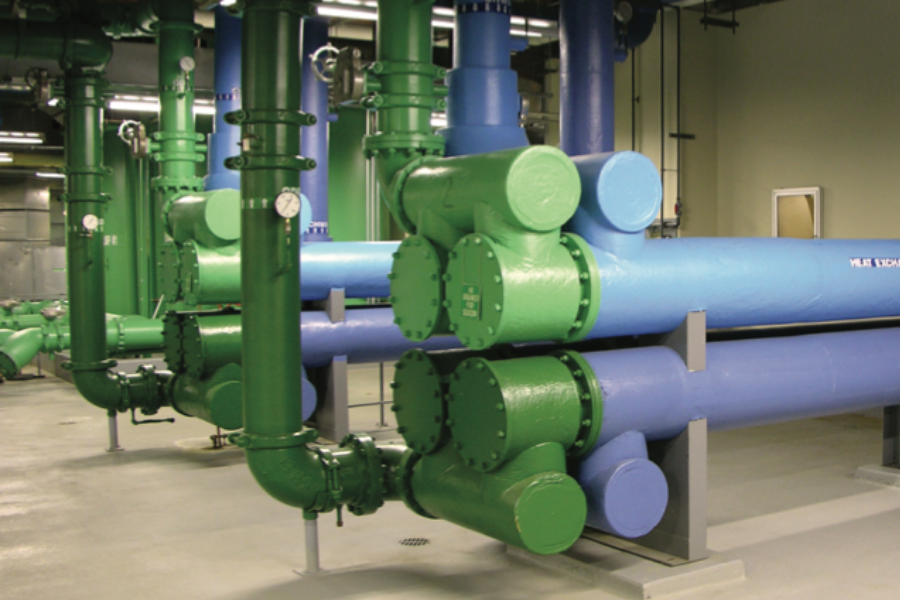
Monitoring Closed Loops
Closed loop systems are deceptively simple.
First, let’s define the concept. In a closed loop system, water recirculates without evaporation or exposure to the atmosphere. As such, only small quantities of make-up water should be required, replacing water loss from leakage at pump packings (seals), expansion tank overflows, or surface evaporation from system vents.
However, it’s common to see closed loops forgotten or neglected in terms of maintenance. Why? First, they are somewhat inert under ideal circumstances, so operators may take their function for granted. Leaks often develop slowly, heat transfer efficiency isn’t always easy to monitor, and the internal system itself is not visible. Sometimes make up water additions are done automatically. Also, most buildings have multiple closed loop systems, which may cause operators to overlook some of the loops if they don’t have a good routine in place for maintenance.
Closed loops typically serve critical equipment, so we urge plant operators to focus on their closed loop systems. The attention will pay off, averting serious problems such as excess electrical costs as a result of lost heat transfer, and the potential of major downtime due to piping and heat exchanger leaks. For example, we know of a Midwest firm that suffered a failure in a 2″ pipe: The resulting leak caused $3 million in damage to a computer.
Prolong the life of your equipment by monitoring closed loops on a regular schedule.
New Closed Loop System Recommendations
For a new closed loop system, pre-operational cleaning is critical to long term control. Proper pre-cleaning and correct initial treatment can ensure that a new system will last for decades.
Here’s how to remove contaminants before start up by pre-cleaning. With all areas open to flow, circulate an alkaline cleaner for 24-48 hours to remove cutting oils and greases. Next, thoroughly flush the system in compliance with federal, state and local guidelines. Lastly, add an appropriate chemical inhibitor, such as nitrite, molybdate or a combination of the two. Use sufficient quantities to maintain corrosion protection. If the new system contains excessive amounts of mill scale, an acid based cleaner would follow the alkaline cleaning.
Part of launching a new system or analyzing an existing system is performing a water analysis to identify existing or potential problems. This analysis should include pH, conductivity, alkalinity, hardness, iron (and any metals specific to the system), sulfate, nitrate and ammonia. The specific corrosion inhibitor used should also be identified.
Glycol loops present unique challenges, which we address in a separate column.
Existing Closed Loop System Recommendations
Existing closed loop systems should be monitored regularly. If analysis reveals past corrosion has occurred and is still occurring, it’s imperative to chemically arrest the problem and clean up existing deposition and byproducts. Introduce a mild acid specifically designed for this application into the system to slowly remove and clean the corrosion by-products. After the chemical cleaning is complete, thoroughly flush the system in compliance with federal, state and local guidelines. Lastly, add an appropriate chemical inhibitor. Use sufficient quantities to maintain corrosion protection. The nature of the corrosion can also alert operators to potential issues before they spell failure to the equipment.
After adding chemical treatment to a system, perform a baseline water analysis. This analysis should include pH, conductivity, alkalinity, hardness, iron (and any metals specific to the system), sulfate, nitrate and ammonia, along with the specific corrosion inhibitor used. Maintain a regular schedule of routine tests, including at minimum pH, iron levels and chemical residuals. Many problems will be made evident by one of these tests. Subsequently a more in-depth analysis can help identify the source of the problem.
Corrosion coupons are also a useful and inexpensive monitoring tool that can provide valuable insight regarding system integrity.
Filtration is useful for maintaining system cleanliness, especially with previously fouled systems.
Microbial contamination should be monitored and dealt with promptly. Specific bacteria tests can identify bacteria which may not appear in dipslides or ATP. Any closed system has the potential to become contaminated with microbes. They can be introduced to the system in a variety of ways. Whatever the cause, microbiological corrosion in a closed system can become a serious problem in a very short time and should be addressed immediately with an appropriate biocide. In some cases, changing the treatment program will help reduce microbial problems. For example, replacing nitrite with molybdate alleviates nitrifying bacteria problems.
Evaluate All Closed Loops Regularly
Take an inventory of closed loops at your facility, and discuss testing frequency with your chemical rep. Chemtex will talk closed loop monitoring with you anytime you need clarity. Just give us a call; we’ll help you craft a strategy to keep those closed loops clean and functioning optimally.




/NQA-ISO-9001-Logo-ANAB.jpg)